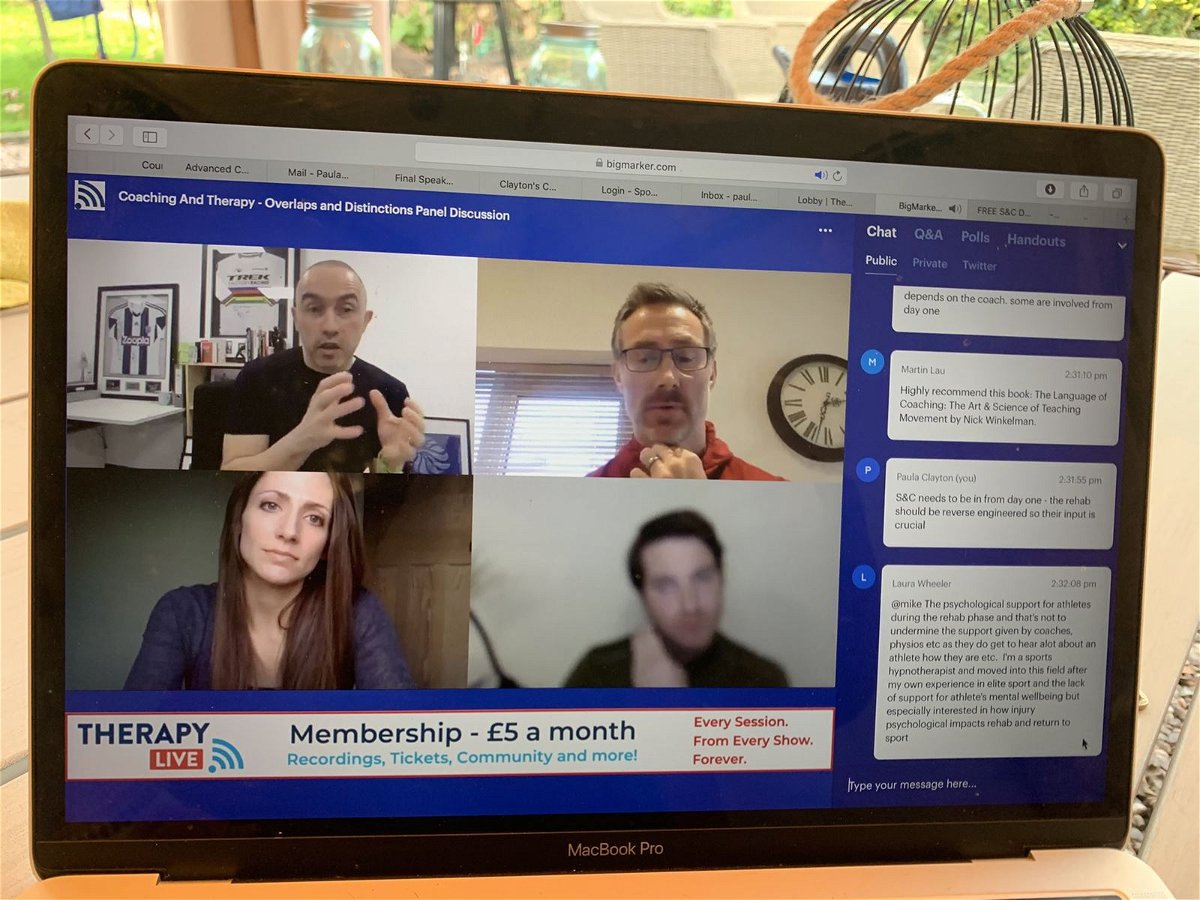

Last weekend I took part in a panel discussion as part of Therapy Live Sport conference. I joined Ellie Richardson and Rhys Shorney to take a deep dive into a really interesting topic, Coaching and Therapy - Overlaps and distinctions. We were all given 5 minutes to put forward our 'hot take' on the subject before taking questions from the panel moderator and then the delegates.

Rhys kicked off and discussed the importance of context in deciding if a therapeutic or coaching approach was most beneficial. He felt very strongly that we all have our own professional identities but this shouldn't act as a barrier to working together. Just as long as everyone works within their professional boundries and scope of practice.
Ellie was next up and gave real insight from an athletes perspective in the injury rehabiltiation process, something that unfortunately is often overlooked.
I had the easy job of going last. Much of what Rhys and Ellie had to say resonated with my thoughts.
So, who is best placed to support the patient/athlete?
I've been delivering courses to allied health professionals about how to effectively integrate strength and conditioning into injury rehabilitation and reconditioning for more than a decade. Rather than enterning into binary arguments which do nothing more than polarise opinions and act as clickbait, we should accept that injury rehabilitation and reconditioning is a very fluid process. We simply need to adjust our approach, and who works with the patient or athlete based on a range of factors.
Education and qualifications
Skills, experience and demonstrated competency
Trust
Personality
Availability
As Rhys and Ellie said in their 'hot takes', ultimately we are all chasing the same thing. We want our patients and athletes to return to performance, whether that is athletic performance or simply being able to play with the grandchildren or do the gardening without the risk of re-injury. The job title of the person working with the patient or athlete is not really that important. It's what they bring to the process that is vital.
"...what I do have are a very particular set of skills. Skills I have aquired over a very long career..."
Bryan Mills, Taken 2008
During our discussion I mentioned this snippet from the now famous speech given by Liam Neeson's character (Bryan Mills, a former Green Beret and CIA officer) in the film Taken.
We will all have a very specific set of skills. Skills which can be applied throughout the rehabilitation process. Some practitioners are particularly suited to specific phases of rehabilitation.
However, collaboration and communication should mean that any allied health professional can have input at any point during the rehabilitation process, within the bounds of their professional qualifications, scope of practice, and experience.
If we are to stand a chance of moving forward, we should move away from devisive arguments and concentrate on building bridges. How do you build a bridge...from both sides.
The best MDT's I've worked in are the ones where there's an understanding of each others skill sets and a trust between professionals.